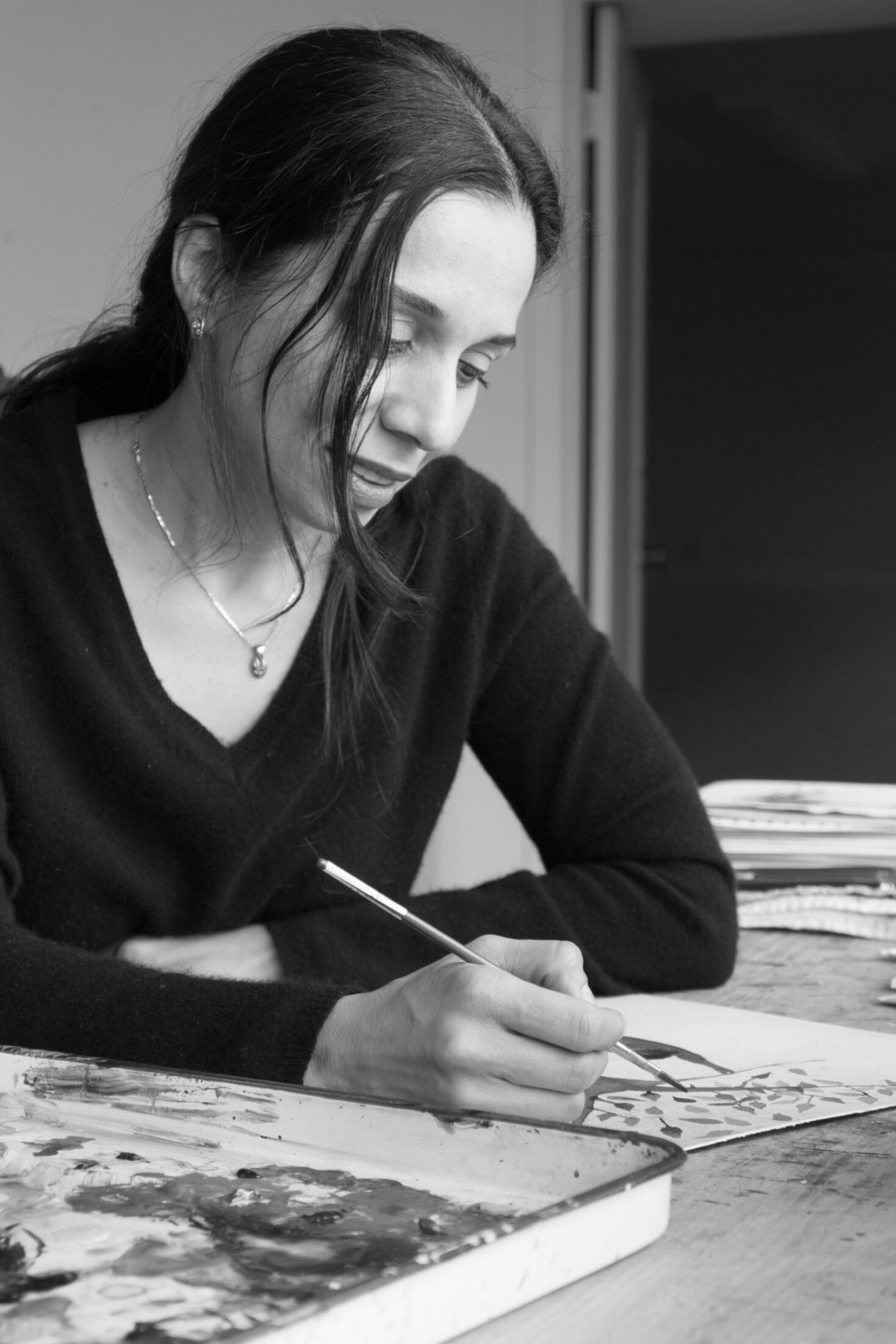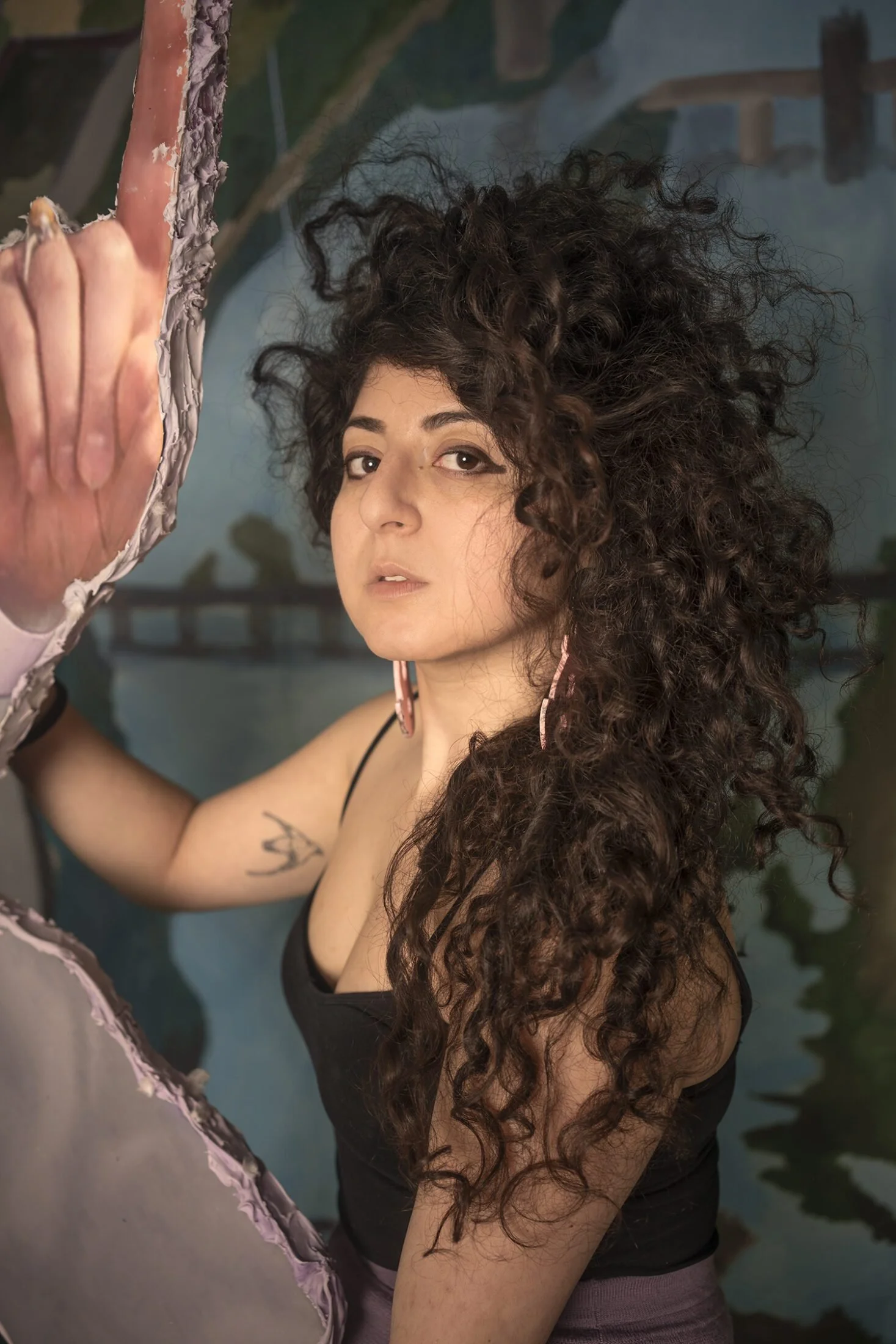Two Iranian American Women Artists Exhibit Poignant Political Work in Philly
Heather Tenzer
At the Pennsylvania Academy of the Fine Arts’ newest exhibition, Iranian American artists Shiva Ahmadi and Sheida Soleimani are using their work to address critical issues of our time. Although from different generations and opposite coasts, their artwork explores similar themes of struggles across borders from political repression in Iran to racial discrimination in the United States. Their artwork is now on view as part of PAFA’s larger group show “Rising Sun: Artists in an Uncertain America,” a joint exhibition with the African American Museum in Philadelphia (AAMP).
The multi-venue “Rising Sun” exhibition features the work of twenty artists from marginalized communities – including indigenous Americans, Black Americans, and Americans with roots in the SWANA region. Artists were asked to create work in response to the question: Is the sun rising or setting on the experiment of American democracy?
“The fact that this show asks our opinion and includes people like me makes me think that the sun is rising,” Shiva Ahmadi, a 47-year-old Iranian American woman tells Al-Bustan. Historically, PAFA — which opened in 1805 — has exhibited primarily white artists. Opening its door to artists that have been historically marginalized is a sign of the times, says Ahmadi. “There’s been a lot of cultural reckoning in the past ten years,” she notes, citing the Black Lives Matters movement as a key moment. “Paying attention to women artists is also part of the change.”
Born and raised in Tehran, Ahmadi is now a Bay Area resident and professor of art at University of California, Davis. She immigrated to the U.S. just before 9/11. “Things were not easy,” says Ahmadi, who recalls experiencing racism and discrimination post-9/11. “I was not able to get my American citizenship until 12 years later,” she notes. “Going to airports was a hassle. Dealing with many things doesn’t come as easy to an immigrant, especially for someone with an accent.”
Ahmadi lived through Iran’s Islamic Revolution, the Iran-Iraq war, and repression of women. “I came [to the US] because I wanted freedom of speech and a better life,” she says, adding that it was tough to be an artist in Iran, where artists often face censorship. “I wanted to make something of my life that was not dictated by the government.”
Here in the U.S., Ahmadi explains, she faces a different set of struggles. “As an artist of color, whatever I do, does not get as much attention as my white peers. I have to work extra hard to be noticed.”
PAFA commissioned Ahmadi to create her animated short film “Marooned” and her painting, “Red Light.” She hand-painted an estimated 5,000 still images using water color in order to achieve two minutes of stop motion animation. The film depicts people building a pathway toward a marooned oil tanker. Once they’re about to board the tanker, ghouls take it away. Her painting “Red Light,” like her animation, uses influences and characters from her cultural background to respond to anti-immigrant rhetoric.
“I want [viewers] to think about immigrants’ experience and all of the political things that are happening around us,” says Ahmadi. “I want them to question the decisions that are being made by people in power, and how they directly affect peoples’ lives.”
American-born artist Sheida Soleimani, pictured above, of Providence, Rhode Island, was commissioned by PAFA to create a photo series: “Absolute Powers.”
Meanwhile, American-born artist Sheida Soleimani, 33, of Providence, Rhode Island was raised in the U.S. by Iranian political refugees. She was commissioned by PAFA to contribute a photo series, “Absolute Powers.” Soleimani typically photographs scenes that she stages in her studio. For this series, she rebuilt the United Nations podium in her studio and recreated scenes of famous political figures speaking at it the United Nations podium. She photographed a living sculpture actor whom she hired to play the role of Hugo Chavez, Muammar Gaddafi, Yasser Arafat, among others.
“I chose to interrogate how we read speeches at the pulpit: How do we see and read politicians based off of our social conditioning?” Soleimani says in an interview with Al-Bustan. She specifically wondered how Western audiences are trained to read politicians from the SWANA region. “Westerners readings are racialized. How can we push Western audiences to understand ‘The Other?’ How do we, as Americans, expect people [from the SWANA region] to behave based on stereotypes that we have constructed as a nation?” she asks.
Also included in Soleimani’s installation is a video where viewers are introduced to a former FBI body language coach whom Soleimani interviewed. Soleimani prompted the coach to look at photos of the late Palestinian leader Yasser Arafat delivering his famous 1974 speech to the United Nations. “Today I come bearing an olive branch and a freedom fighter's gun. Do not let the olive branch fall from my hand,” Arafat implores the public.
“She interpreted [his body language] as arrogance and dominance. That was interesting,” Soleimani tells Al-Bustan. “That was a Western read and harmful… As someone who grew up in the SWANA community in the West, one thing that has been harmful is that the public education system is Eurocentric.” She adds: “How can education be changed to teach our society about other regions?”
“All my interest stems from my parents’ background and their talking about escaping imprisonment in Iran,” says Soleimani, who is also an Assistant Professor of Studio Art at Brandeis University. In the early 1980s during the Iranian Revolution, her father was part of a Leftist pro-democracy group that tried to create freedom of speech and rights for women.
“The government was out for his head for many years,” Soleimani explains. Her father escaped by horseback over the mountains and came to the U.S. as a refugee. When attempting to follow her husband and flee Iran a few years later, Soleimani’s mother was detained at the border. She was subsequently imprisoned. The couple were reunited in the U.S. in the late 80s.
Both artists attended the show’s opening last month. Ahmadi noted, “It’s a beautiful show. [The curators] put it in context of American history. I love seeing the work of a variety of artists from different backgrounds and cultures.”
Rising Sun, which opened March 23, is slated to close Oct 8th.
***
Heather Tenzer is a Philadelphia based journalist and filmmaker. She has been supported by grants and fellowships from Yaddo Artist Residency, the Jerome Foundation, the New York State Council on the Arts, and the Queens Council on the Arts.



